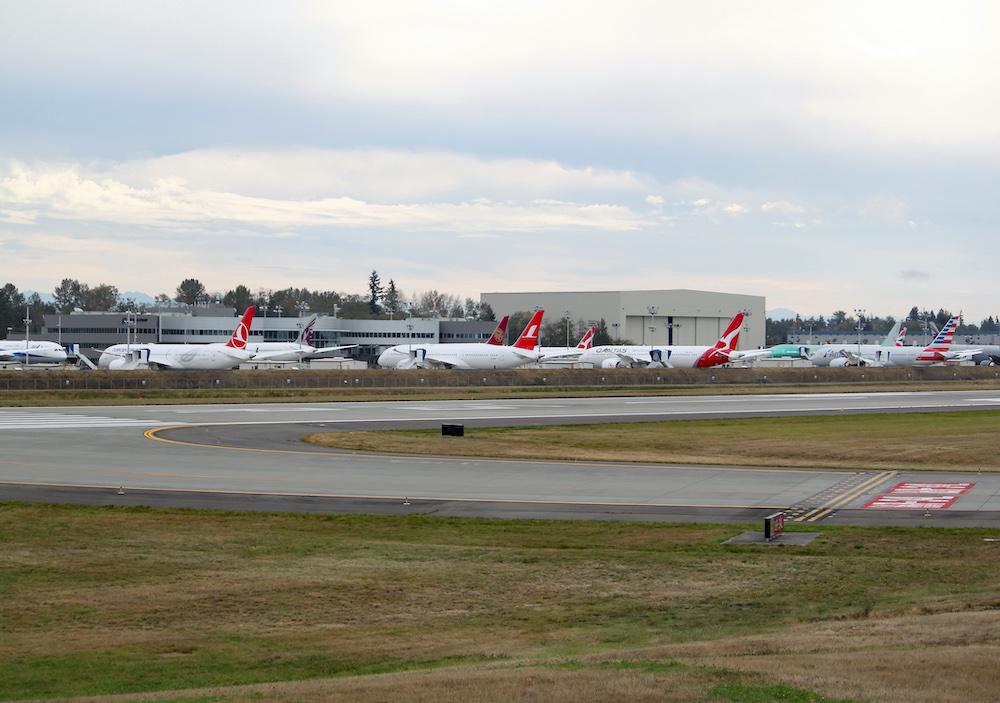Boeing’s 787 Glut Includes 80 Undelivered Aircraft, Analysis Shows

Boeing has not delivered a 787 in more than three months and now has at least 80 of the widebody twins awaiting customer handover, an Aviation Week analysis shows.
The program continues to be bogged down by post-production inspections and customers’ hesitance to take new widebody aircraft amid a historic demand downturn.
The completed aircraft awaiting delivery exclude about 10 that have been recently rolled out and would not normally be handed over to customers so soon, even absent mitigating factors. It also excludes a test aircraft, the fourth 787 built, that remains in Boeing’s hands.
Boeing’s most recent delivery of the type took place Oct. 13, 2020 when Etihad Airways accepted a 787-10. The handover came amid news that a series of production-quality issues first detected in mid-2019 was growing larger.
The most widespread issue deals with the smoothness of composite fuselage interior skin where subassemblies join. That problem in combination with one related to non-conforming gaps—caused by incorrectly sized shims, where fuselage sections join—forced immediate action on eight in-service 787s.
While Boeing has not discovered any other aircraft with safety-of-flight issues, it continues to uncover anomalies. The skin-flatness nonconformities are cropping up on more aircraft during post-production inspections. Some of them affect areas not previously reported, including cargo doors, two sources told Aviation Week.
It is not clear whether the skin issue alone will require in-service disruptions, such as unplanned repairs, or if it will affect airframe service lives. Boeing is still evaluating the issue, the sources said.
Meanwhile, the company discovered a separate problem affecting main cargo-door installations on some undelivered aircraft. The exact nature and scope of the problem is not clear, but sources told Aviation Week that Boeing determined the issue was limited to a subset of aircraft, none of which had been delivered to customers. Necessary re-work has been done.
The newly discovered cargo-door installation problem has not contributed to delivery slowdowns, one of the sources said. Rather, the extensive skin inspections and customer-driven delivery-schedule reshuffling explains the growing 787 backlog, the source added.
Boeing, which is due to release its fourth-quarter earnings on Jan. 27, declined to comment.
In the company’s 2020 fourth-quarter deliveries update issued Jan. 12, Boeing CFO Greg Smith hinted at the "comprehensive” inspections’ role in holding up deliveries.
“While limiting our 787 deliveries for the quarter, these comprehensive inspections represent our focus on safety, quality and transparency, and we’re confident that we’re taking the right steps for our customers and for the long-term health of the 787 program,” Smith said. Boeing delivered just four 787s last quarter, and 53 for the year. In 2019 it totaled 158 787 deliveries.
The deep, prolonged global travel slump—notably the near 90% year-over-year decline in international traffic—offers little hope that Boeing’s 787 program will rebound anytime soon, even if the production issues are solved. Its on-hand 787 inventory includes about 35 aircraft in storage at Victorville, California. Another 14 at Boeing’s Charleston, South Carolina facility appear to be in long-term storage. Boeing is in the process of moving all 787 final assembly to Charleston and is reducing 787 output to five per month, down from a peak of 14 per month.
Major customers with 787s in Boeing’s inventory include lessors Air Lease Corp. and Avolon, with nine and five, respectively, as well as Qatar Airways, with six. Seven 787-8s in the current inventory are shown as being ordered by Boeing Capital and are slated to end up with American Airlines. Norwegian Air Shuttle, which recently announced its plan to shelve long-haul flying as part of a restructuring, has four.
—Additional reporting by Bo-Goran Lundkvist.







Comments
And Boeing keeps whittling away at inspections and inspectors and clearly has no quality control process in the system.
Why has not the management and board been cleaned out?
So much for accountability, one way street, top down.